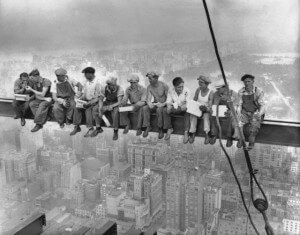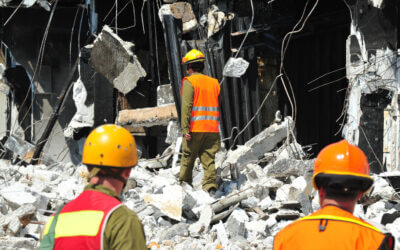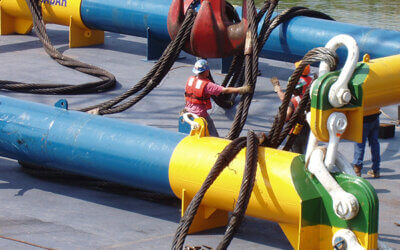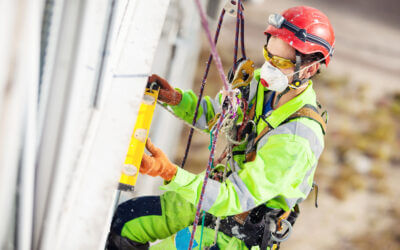29 Sep 1932 — Construction workers eat their lunches atop a steel beam 800 feet above ground, at the building site of the RCA Building in Rockefeller Center. — Image by © Bettmann/CORBISWhile there are specific types of lifting equipment and safety protocols that will apply to certain types of work, here are five general pieces of advice for keeping people safe on the job. This is also helpful advice for contractors and construction workers.
1. Require the use of personal protective gear on all jobsites. Employers are required to provide construction workers with proper personal safety equipment; however, it’s also their responsibility to make sure employees know how to properly use that equipment. Certex lifting products are designed to keep people safe, but the best lifting equipment in the world can’t protect someone who isn’t using it properly. Personal safety equipment also includes things like hard helmets, safety glasses, and gloves. By requiring each employee to use personal safety equipment, sites will be much safer for everyone.
2. Make sure trenches and excavation sites are safe and well marked. Unprotected trenches and excavation sites can be incredibly dangerous for employees. All trenches should be built at the regulated slope and all supports should be installed before any employees enter the site. Providing an easily accessible exit pathway is also imperative. With an exit strategy in place, employees will have a quick escape from the trench if an emergency should arise.
3. Don’t rush construction of scaffolding; make sure it is properly inspected and maintained. Or, put more simply, never cut corners. Taking the time and resources to properly construct scaffolding and planks can be tedious work, but the Occupational Safety and Health Administration (OSHA) states scaffolding needs to be stable under its own weight and should be able to withstand up to four times the maximum recommended load. Also, be sure to never support a structure with barrels, boxes, blocks or concrete.
4. Regularly inspect tools and equipment. If an employer finds tools or equipment that don’t meet safety standards, repairs should be conducted immediately. Never allow an employee to use unsafe equipment or tools. Inspecting lifting equipment for damage is a particularly important aspect of keeping job sites safe. When it comes to testing fall prevention and arrest equipment, consistency is key. When testing fall arrest systems, OSHA recommends using a weight of 300 pounds.
5. Check for fall dangers and require the use of fall protection equipment when necessary. While it’s very important to take a proactive approach to preventing falls, it’s equally important to have safeguards in place anyway. When it comes to fall arrest, equipment falls under two major categories: general fall arrest (safety nets) and personal fall arrest (lifelines). Safety nets are a good idea when the potential fall distance exceeds 25 feet. Lifelines are ideal for employees working at high heights when scaffolding isn’t being used. And of course, providing fall arrest training to employees is incredibly important.
For more information, contact Certex for fall protection courses, the latest lifting equipment, and more.
[/fusion_builder_column][/fusion_builder_row][/fusion_builder_container]






0 Comments